- Administrator
- Albums and Singles
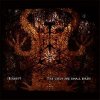 Herbst9 bring into focus the trances and dream-quests of shamans and the primeval connection we all have to the primitive past. Drawing on the vast reservoir of the collective memory of the human species, Herbst9’s Henry Emisch and Frank Merten produce monumental music that simultaneously delves into deep time and memory, as well as the physically unfathomable depths of the subterranean.
Herbst9 bring into focus the trances and dream-quests of shamans and the primeval connection we all have to the primitive past. Drawing on the vast reservoir of the collective memory of the human species, Herbst9’s Henry Emisch and Frank Merten produce monumental music that simultaneously delves into deep time and memory, as well as the physically unfathomable depths of the subterranean.
This is no superficial attempt at ethno-ambient puerility, however, merely lashing voice samples of ‘primitives’ to anemic electronic washes or trip-hoppy tribal rhythms. Herbst9 haven’t gone for the easy option of tying together stereotypical elements in an attempt to create some dubiously portentous vision of the past. In some respects it feels as if they have discerned the secret of temporal elasticity, bent time to their will, and rendered the intervening period between then and now obsolete. Even so, they are only able to give us glimpses and fleeting flavors, partial sketches, distilling observations into representative and digestible bite-size chunks. Snatches of almost incomprehensible voices, with only the occasional word being understood, surface and fleetingly rise above seas of deep oceanic drone, before being sent once more into the depths. These are the voices of all our ancestors, familiar and knowable but simultaneously and forever beyond our understanding, alien even. It would be quite easy to let these voices become overwhelming, to form a warm fuzzy blanket, reassuringly comforting. Yet, there is a lot about these recordings that is distinctly unsettling and not quite as benign as intimated.
The chronological distance is one warning perhaps—that however much one would like to think we can somehow connect with those voices, the world it describes is out of reach and not the one of today. The samples used are indeed culled from the present, lulling one into a misleading belief that they are the bridge between the years. Couple those voices with the darkly-flavored and edgy swirls and drones constituting the medium upon which they float and have their being and alarm bells should start ringing. These background drones are meant to upset and disturb the equilibrium, even if only subliminally, their purpose is to serve as a reminder that these waters contain hidden dangers. The ‘ancestral voices’ are just one among many inhabitants of this temporal ocean, and not all of them are friendly and welcoming.
Dark ambient, when successfully crafted, is the conjuror of both sublime visions and dark unformed terrors. Herbst9 dig deeply and artfully ino the genre, coming up with resonances and music that burrows into the soul. The title track is entirely typical: softly shuddering washes and cavernous distant thunder roll ominously overhead with gentle whispers echoing in harmony. Gradually, the tone deepens, becoming darker, and it ushers in an uneasiness and a discernible coldness. This state is compounded and heightened by the introduction of a shuffling tribal percussive gait, portending a slow and unhurried doom. In contrast, the opening track “The Lament Begins” hints at deep loss and an even deeper grief, one that spans the years and continues to entrench itself ever deeper the more distance it puts between past and present.
It’s those tensions created by the chiaroscurotic dynamics that make this album successful. In other words, the interplay between the beguiling siren voices and the dark, dense, liquid medium from which they emerge make this album as good as it is. The tension reveals itself with subtlety, resulting in a subliminally-felt frisson rather than physical sparks. An indescribable dread descends, its source remaining undiscovered. Despite my generally positive outlook on it, it has to be noted that this album can't escape all negative criticism. My one disappointment, mild though it is, revolves around the fact that I felt there was a sense of uniformity; this album sometimes defines itself too narrowly and so its execution suffers.
Even with this reservation, I consider The Gods are Small Birds, but I am the Falcon to be a fine album, Emich and Merten exert a good measure of craft upon the dark ambient genre. Dark ambient is all about the evocation of mood and atmosphere, and by any of the criteria normally used to judge such genre efforts, I deem this to be a great deal more than adequate.
samples:
Read More
- Administrator
- Albums and Singles
 Our increasingly irregular feature looking at crucial new dance music returns this week with reviews of a two-disc DFA/Supersoul Recordings comp, a new collection of Balearic disco, an edits disc by Betty Botox, a mix CD by Optimo and the debut album by Yo Majesty.
Our increasingly irregular feature looking at crucial new dance music returns this week with reviews of a two-disc DFA/Supersoul Recordings comp, a new collection of Balearic disco, an edits disc by Betty Botox, a mix CD by Optimo and the debut album by Yo Majesty.
"Death From Abroad Presents Supersoul Recordings: Nobody Knows Anything"
DFA
DFA's European sister label Death From Abroad gives us a double-disc compilation of singles and b-sides, collecting pretty much everything released via vinyl and digital by Berlin's Supersoul Recordings. Supersoul is a relative newcomer in the dance music scene, putting out its first single in 2006. Founder Xaver Naudascher, who also records for the label, was previously best known for collaborations with Einstürzende Neubauten, remixes for Pylon and UNKLE, and production work on the Run Lola Run soundtrack. I will try not to hold that last credit against him. The label's unifying aesthetic is a focus on lateral-minded, genre-defying approaches to classic subgenres of dance music. A bit of fun can be had spotting the influence from track to track: "Oh, there's a Detroit electro piece," "This one sounds like Italo Disco," etc. However, these genre exercises are far from reverential or narrow in scope. The opener "Lost," credited to Naudascher, mixes messy, hand-played granular synth sounds into the rigid framework of Detroit 909/303 electro. The epic four-part "Moon Unit" by Mogg & Naudascher is krautrock-influenced Italo Disco, combining sparkling arpeggiations with spacious, longform kosmische meanderings. It's awesome stuff, easily matching the bar previously set by Delia & Gavin's The Days of Mars. Walter Jones aims for the ultracompressed disco-house aesthetic made famous by contemporary French producers, but ends up in territory that is no less sleek, crystalline and ultramodern than Naudascher's contributions. Other standouts include Plastique de Reve's two sides, both which find new and interesting ways to breath life into the corpse of Hi-NRG house music, whether with the sassy singalong refrain of the Radical Cheerleaders on "Resist," or the dramatic use of resonance, cutoff, stereo panning and EQ in "Lost in the City." There are a few clunkers across these two discs, but surprisingly few, as Naudascher clearly has a strong editorial voice, and almost everything he has released fits into his vision, bringing dance music's past kicking and screaming into an everpresent now.
sample:

"Cosmic Balearic Beats Vol. 1"
Eskimo
sample:

Betty Botox, "Mmm, Betty!"
Endless Flight
sample:

Optimo, "Sleepwalk"
Domino
sample:

Yo Majesty, "Futuristically Speaking...Never Be Afraid
Domino
sample:
Read More
- Administrator
- Albums and Singles
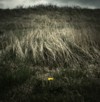 Despite the reference in the title to the collector of souls, this collaboration between ambient trio Rameses III and Brad Rose of Digitalis, a.k.a. The North Sea, eschews the obvious direction of doom and menace. Instead, they journey into frequently blissful territory, with an emphasis on emotional textures that invite introspection and rejuvenation.
Despite the reference in the title to the collector of souls, this collaboration between ambient trio Rameses III and Brad Rose of Digitalis, a.k.a. The North Sea, eschews the obvious direction of doom and menace. Instead, they journey into frequently blissful territory, with an emphasis on emotional textures that invite introspection and rejuvenation.
The album consists of two 18-minute tracks supplemented by a remix from Xela. Quiet drones and subtle strings with occasional plucked notes form the main compositional elements of “Death of the Ankou.” While a mournful strain runs through it on occasion, the track doesn’t come across as sad or depressing so much as accepting of things as they are. The effect is surprisingly soothing, if not comforting. Delicate chimes and a distant reed instrument provide the wistful ending, like the last gasp of stars fading in the sunrise. “Night Blossoms Written in Sanskrit” begins with a deeper drone, while higher pitches fly overhead. A strummed guitar surfaces momentarily before it’s absorbed back into nothingness. Some reverberating strums pop up again as the ending escalates toward a sunnier ending. Although the first one isn’t a downer by any means, this track builds from that one into something that’s more joyful and optimistic.
Xela’s remix, “Return of the Ankou,” combines elements of the two main tracks into one which becomes more active and less subtle. The strums are more in the forefront here, as are rattles, chimes, and slight doses of feedback. It’s a nice contrast to the two that precede it, yet linked enough thematically that it returns the album to the beginning in a cycle of death and rebirth.
The experience is both peaceful and invigorating, inviting frequent returns.
samples:
Read More
- Administrator
- Albums and Singles
 Christopher Leary combines beats with orchestral elements in this mostly airy and pleasant album. The songs are all solidly constructed and easy on the ears, but frequently lack distinction. Leary expresses a limited emotional palette on these compositions, and as a result the album is short on personality.
Christopher Leary combines beats with orchestral elements in this mostly airy and pleasant album. The songs are all solidly constructed and easy on the ears, but frequently lack distinction. Leary expresses a limited emotional palette on these compositions, and as a result the album is short on personality.
The first few songs are so similar that they’re nearly indistinguishable from each other, and none lingers in the mind after they’re over. Leary changes things a little bit with "Infotain Me," giving it a longer introduction before bringing back the beats. This one doesn’t quite go anywhere different from the others, but it’s a sign of change that continues as the album progresses. "Anomie" adds a slight distortion as a textural component, and the tempo picks up a little bit compared to those that precede it, but it still doesn’t necessarily do anything different.
"Open Top" has some metallic echoes in addition to its standard instrumentation. "Lifewish" is mostly ambient with slight melodies and no beats at all, like "Oneirist," which follows it. "Bluebottles" and the closer "Vegas" are both decent tracks, yet don’t have a whole lot going on that isn’t heard elsewhere on the album.
Since almost every song is ultimately driven by beats rather than melody, the orchestral elements often feel decorative rather than essential. They are frequently beautiful, but don’t evoke anything further. It’s certainly not a bad album, but it’s not terribly exciting or different, either.
samples:
 
Read More
- Administrator
- Albums and Singles
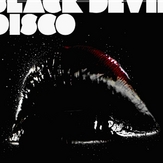 Ridiculously slobbered over by elite geeks as well as the far more fashionable new disco vanguard, the progressive music of Black Devil was allegedly rediscovered after years of obscurity, culminating in a handful of overblown, overlapping releases from Rephlex. Irrespective of the convuluted backstory's validity, original member Bernard Fevre's return after roughly three decades manifests itself as this nebulous collection of undated, unglamorous tunes.
Ridiculously slobbered over by elite geeks as well as the far more fashionable new disco vanguard, the progressive music of Black Devil was allegedly rediscovered after years of obscurity, culminating in a handful of overblown, overlapping releases from Rephlex. Irrespective of the convuluted backstory's validity, original member Bernard Fevre's return after roughly three decades manifests itself as this nebulous collection of undated, unglamorous tunes.
Since Fevre has opted not to reveal just how old or new these six tracks are, I'm therefore compelled to eliminate all the evidently contrived hype from the equation. With context stripped away, what remains simply fails to dazzle beyond a few melodic glints hardly worth revisiting. Opener "The Devil In Us" shuffles through synthesizer soundbanks with untreated attention deficit disorder, while "On Just Foot" figuratively and half-literally farts along with a giddy proto-rave tinkling electro bell line. "I Regret The Flower Power" begins like some funky remix of Throbbing Gristle's "Hamburger Lady" before a bubbly bassline and sharp string patches jump into the forefront, though Fevre's vocals disappoint. Throughout the songs, Fevre's muddy muttering, indistinct trill, and wordless bleats sometimes make for surprisingly decent hooks, though typically lack presence, epitomized by the Moroder-esque "Coach Me" and "An Other Skin."
Other than those who still consider Richard James a tastemaker or delight in anything even remotely Metro Area-ish, I doubt that 28 After, released by a label that hasn't even updated its website to announce this release, can do much more for Black Devil's profile than neatly wrap up its 15 minutes of underground fame.
samples:
Read More
- Administrator
- Albums and Singles
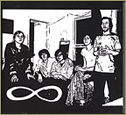 This disc, the first of two collaborative volumes, is the live studio seed of Hototogisu and Burning Star Core, and stands as tall as the best of their own work. Creating something beyond their usual repertoires, this five-tracker collaboration sees both acts oozing into one five-brained monster. These are not the usual furious black-outs or dolorous droning jeremiads of much underground collaboration.
This disc, the first of two collaborative volumes, is the live studio seed of Hototogisu and Burning Star Core, and stands as tall as the best of their own work. Creating something beyond their usual repertoires, this five-tracker collaboration sees both acts oozing into one five-brained monster. These are not the usual furious black-outs or dolorous droning jeremiads of much underground collaboration.
The lack of any over exertion of musical influence from either act seems to illustrate how extremely solicitous this duo and trio were of each other’s input. This trapped energy of this live studio recording (god save us from postal collaborations between bored pale laptoppers) audibly bounces between the players. Their lack of musical eggshell treading means that the record is neither a jagged glass soundclash nor a collection of disparate elements that refuses to gel. The glue of Volume One is the multi-tasking sounds of C. Spencer Yeh (Burning Star Core’s mainman) and Hair Police’s Trevor Tremaine, here playing as part of an expanded BxC with fellow policeman Robert Beatty. Tremaine’s percussion provides a bed for the players to leap from, a pacemaker (in both senses of the word) and a structure setting unspoken and unseen borders.
"One" is a good example of both act’s self-control, the drone roar relying more on the trickery and force of muscle and smoke than an overload of the senses. The stamp of the percussion seems to be gating the stretch of the snarling feedback, Hototogisu’s Matthew Bower and Marcia Bassett turning drone and vocal inwards instead of spilling rage across the track. The electronic splatter of "Three" has riverbed singing that’s pinpricked into bloody bawls amidst sand dune drones. Sounding like the fruit of neither act, it again appears to be Tremaine’s central and audibly obvious presence that’s driving this performance. His lone-man-in-a-factory clank and kick seems to thicken up the drones, turning them into a thick matt-paint drool.
From the evidence of this 18-minute five-track disc, this team-up is one that should be forced to get together weekly as an article of law; it totally works. The unstoppable elemental force of Bower and Bassett never sound like they’re gnawing at the structures to get loose and splurge ritual across everything. Saying this is a mellowing and focusing of both bands modus operandi is no insult. The beautiful interplay of "four" feels closest to the sound of Burning Star Core, the little melodic patterns evocative of the work of C. Spencer Yeh. Pulling half-formed blueprints from his violin and electronics his input is more noticeable on repeated visits.
Having been lucky enough to see Hair Police live, I think it’s safe to suggest that the slowly expanding bass line on "Two" is from one of Beatty’s handheld boxes. The drums are at their loosest here, almost sinking into the morass, despite syncing up with low end. This constructed aspect doesn’t just leave the others applying simple drones though; they wriggle and surge under tethers. Their part of the sound never slips into being innocuous; it still packs a hefty sting.
This quintet avoiding the current trend for falling into recurring explosions of collective noise, preferring to explore the territory rather than razing everything to the ground. This volume seems more like a Vulcan mindmeld than a jam session, and maybe the fruits of their union should’ve been tagged with a new amalgamated moniker. Volume Two has a lot to live up to.
samples:
Read More
- Scott Mckeating
- Albums and Singles
Listening to Heather Leigh records is like being abandoned in limbo-like badlands. Very few artists are making this sort of sound world visible, and none are doing it using only pedal steel, voice and harmonica. This Fag Tapes cassette picks up the passengers left stranded in the downpour of her Pot Baby album and takes them further in.
Heather Leigh’s voice would fit equally well in either the cathedral or the graveyard; her lullaby culling call is an instantly recognizable vocal. It’s possible to invest it with either malice or innocence, and this duality also applies to her pedal steel playing. At times it’s a crooked metal wave of weight, and seconds later an untouched feather drift of pastel sounds. The drones never obfuscating the instruments musical origins.
While Leigh’s vocal seems composed and focused, her febrile hand movements spew out the combination of iron and sunburn. She never prevaricates on Jailhouse Rock, and her improvisational choices are not fortuitous; she seems to know exactly where she’s going. Always ready to follow or ride the tones that agitate the air she births ugly/beautiful organically sourced sounds. Coming up with crabwise melodic patterns, her fingers push air into forming the thick treacly sounds of collapsing skylines, spiraling up and into itself. Picking out a steady pattern, like the playing of rubber bells, she stamps out seasick and high-end tones. Just before the twenty minute mark, a harmonica is played sounding like its come straight from the aftermath of the American civil war aftermath. The smoky remains of pedal steel remain like ringing cannon feedback in the ears.
On the second side of the tape there seems to be another voice in the mix aside from Heather’s. This dueling male sounding vocal may be her voice electronically altered or an uncredited partner in crime, but it works incredibly well against the higher notes. Heather Leigh’s music seems to be expanding by increments with every release. Now where’s my solo harmonica CD-R?
Read More
- Gary Suarez
- Albums and Singles
Admittedly, I have a bit of a love-hate relationship with Les Temps Modernes. Founder James Nice has an unshakeable blind passion for '80s proto-electronica, post-punk, and anything Factory Records ever considered releasing. What this translates to is a reissue program comprised of lost classics, adequate relics, and unearthed turds. Chicken Rhythms falls squarely into that middle category.
An argument has been made that Northside was the product of the esteemed Anthony Wilson trying to exploit the "Madchester" scene that groups like The Stones Roses and the label's very own Happy Mondays were bringing to musical heights or cultural lows, depending on who you ask. Based on these recordings, which includes the band's sole Factory album and a handful of bonus single tracks, it comes across as a forced fit. Despite the outright mimicry of the period's neo-psychedelic visual art on the cover, Northside's music rarely resembles any of these "baggy" groups or their immediate descendents enough to even warrant charging the members as opportunist copycats or bandwagon jumpers. I wonder if Northside might have had at least a little more longevity, or perhaps a shot at a proper crossover hit if they hadn't been branded so irresistably with this faddish scene.
"Shall We Take A Trip," their most notable single, only proferred the band a faint glimmer of success in their native U.K., largely due to and simultaneously in spite of a BBC ban of the tune over its drug-friendly lyrical content. While hardly as anthemic as that classic Mondays' hit "Hallelujah," this track as well as several other very enjoyable numbers like "Take 5" and "My Rising Star" will satiate casual and rabid collectors of '90s alternative music, to say nothing of the Factory completists who depend on LTM.
Read More
- Creaig Dunton
- Albums and Singles
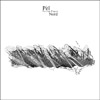
Using only the sound of manipulated AM radios, Fages creates washes of slow, seemingly unchanging studies of frigid sound. Not unlike the asceticism of Eleh, these deliberately static pieces require intensive listening to fully unravel.
"P" is the harsher of the pair here, drawing out a high pitched, painfully shrill electronic tone that immediately begins and never stops.A slight warbling appears, and subtle flickering and fluttering noises seem to arise due to the clipping of the admittedly loud mix.While it’s grating at times, the subtlety that can be heard is fascinating.
On the flip side, "N" works within the same realm of sustained, constant tones exhumed from AM radio waves, but the result isn’t as shrill and therefore not as tinnitus inducing.Instead, there is an underlying tension that doesn't relent:I always expected something else to happen, but the haunting, spectral sounds emit only the most minuscule of changes.There is a slight climax with a dramatic swell-up at the end, but it doesn't reduce the tension at all.
Considering this 7" is a pair of sparse, often times painful, tones that barely change, it isn't the most pleasant record I've heard all year, but it excels conceptually and artistically.Shades of Eleh are here in the staunch minimalism and focus on sparse frequencies, but there feels like a little bit more of grime here, which adds to the variation that can be heard.
Read More
- Administrator
- Albums and Singles
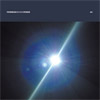
On his first true solo follow-up to 2008's brilliant Black Sea, Christian Fennesz has once again presented a work of hazy, inviting brilliance. With the addition of percussion from Steven Hess on the title track, there’s an even greater sense of pop musicality shining through the more abstract moments.
Christian Fennesz' work is not limited by any form of technology, yet he is frequently and unfairly pigeonholed by outsiders as a "laptop artist," despite the frequent use of untreated guitar in his music.Even when he uses software and digital effects, the result is far more human and organic than he is credited for.
The opening "Liminal" and closing title track exemplify this best, both songs meshing the feeling of 1960s pop with modern avant garde instrumentation.The former launches immediately, mixing his plaintive guitar notes with waves of processed, but organic sound that is unidentifiable, yet inviting.He perfectly balances the dissonance of technology with warm, beautiful melodies.Crunchy fuzz layers and gentle rolling tones coexist in perfect harmony, and the entire piece possesses a living, breathing sound to it.
Ending the EP is the title track, which is a pastoral combination of field recordings and guitar, both electric and acoustic.Hess' drumming is perfectly understated: quiet enough to not disrupt the peaceful ambience, but present enough to give the song a sense of movement and propulsion.It has that perfect end of summer sound he has mastered: a mix of natural beauty with just a hint of nostalgia and melancholy.Fennesz has hinted that future work may go more in this direction, and I think it adds another layer of depth to his already complex oeuvre without upsetting the delicate balance.
Between these two songs there’s a bit more experimentation and variation on similar themes.The shimmering guitar and erratic buzzing of "July" still convey that Fennesz warmth, but is more abstract and collage-like, and also has an overall heavier, more monolithic sound to it.The longer "Shift" is more droning that I was expecting, considering the other songs here.Opening with gentle string-like waves of sound, the pieces slowly come into focus, enshrouded in warm, vintage static.Structurally it stays rather monochromatic, lacking the dramatic changes and development from the other pieces.It’s not quite as captivating as the other tracks on this 10", but a less-than-stellar Fennesz track usually rivals the best work of other artists.
Every piece of music I have heard from Fennesz has been fascinating, and this EP is no exception.I only wish there was more here:the sub-20 minute duration simply serves to tease for what will hopefully be an upcoming full length.Listening to this recently, at the end of August and early September, it perfectly captures that end of Summer vibe that works so well.Rarely are there artists this adventurous that I can turn to no matter what my mood is:it's never off-putting or distracting, which is rare.With a new collaboration with Ryuichi Sakamoto due at any time and hopefully a new full length, this 10" works as a great teaser.
samples:
 
Read More
- Administrator
- Albums and Singles

Landings is the culmination of nearly half a decade spent exploring and remapping Anglezarke, on the West Pennine Moors of northern England. Over the course of its pagesLandings interwines the artist's own narrative with that of the landscape - its topography, history and place-names.
This Third Edition significantly expands on the previously published text, adding new writing from 2009-2011 as well as further research into the toponymic and linguistic heritage of the landscape.
To celebrate its publication, a new 35-minute album has been produced which reworks Rapture - a pivotal recording from the second Landings album. All three albums in the Landings Seriesare now available together, as a high-quality, digital download:
{1} Carousell Landings (28th June, 2006)
{2} Richard Skelton Landings (28th June, 2009)
{3} Richard Skelton Rapture (28th June, 2011)
Each edition of Landings is individually signed by the artist and presented in a beautiful handmade cover, printed on high-quality Gerstaecker paper.
More information here.
Read More

